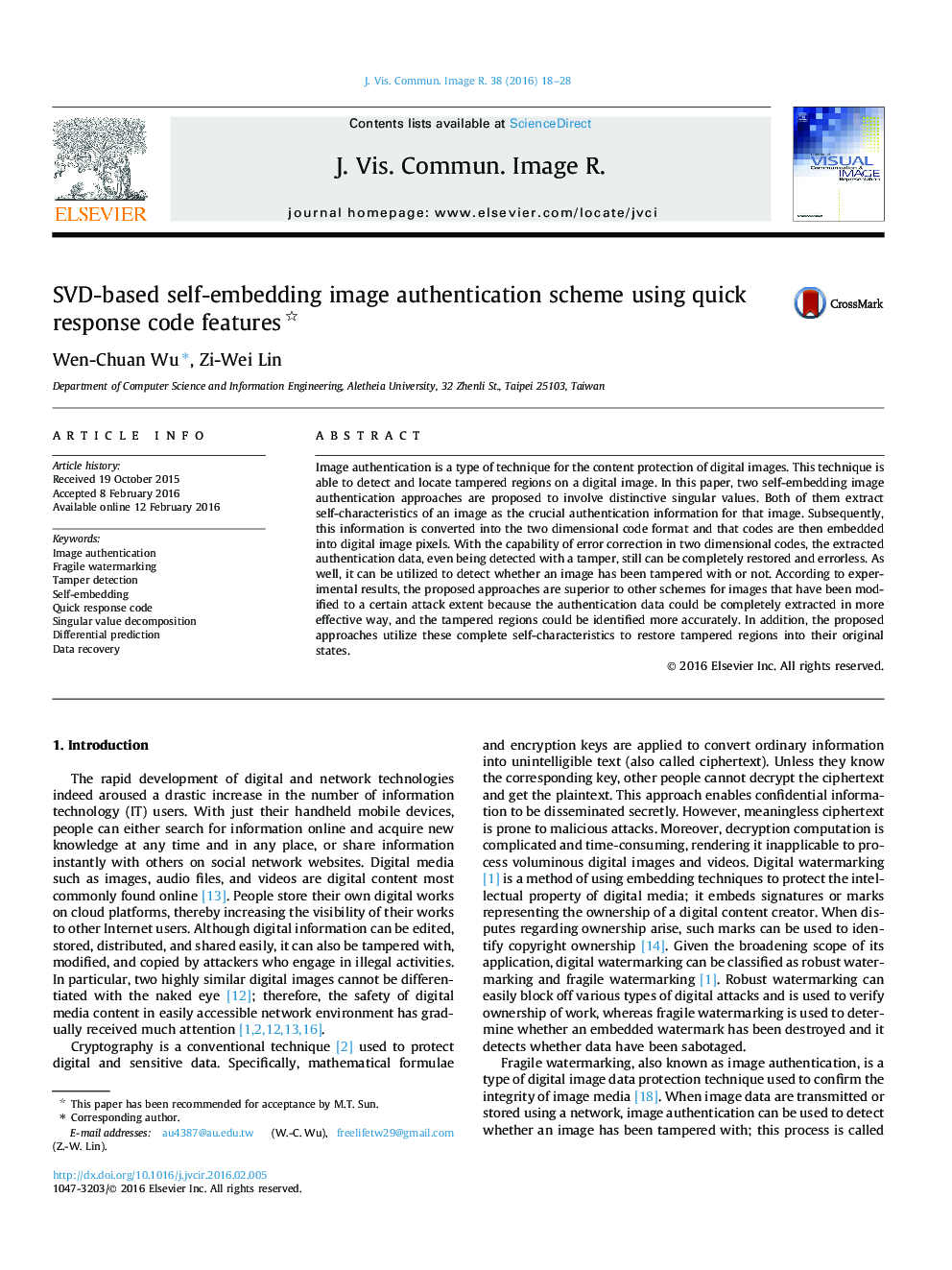| Article ID | Journal | Published Year | Pages | File Type |
|---|---|---|---|---|
| 529648 | Journal of Visual Communication and Image Representation | 2016 | 11 Pages |
•SVD is used to analyze the maximum capacity of matrix elements.•Use the error correction capability of QR codes to avoid possibly detected misjudgments.•Differential prediction is lossless to diminish the volume of authentication data.•Two proposed schemes are superior to other schemes in terms of authenticated quality and recovery capability.
Image authentication is a type of technique for the content protection of digital images. This technique is able to detect and locate tampered regions on a digital image. In this paper, two self-embedding image authentication approaches are proposed to involve distinctive singular values. Both of them extract self-characteristics of an image as the crucial authentication information for that image. Subsequently, this information is converted into the two dimensional code format and that codes are then embedded into digital image pixels. With the capability of error correction in two dimensional codes, the extracted authentication data, even being detected with a tamper, still can be completely restored and errorless. As well, it can be utilized to detect whether an image has been tampered with or not. According to experimental results, the proposed approaches are superior to other schemes for images that have been modified to a certain attack extent because the authentication data could be completely extracted in more effective way, and the tampered regions could be identified more accurately. In addition, the proposed approaches utilize these complete self-characteristics to restore tampered regions into their original states.
